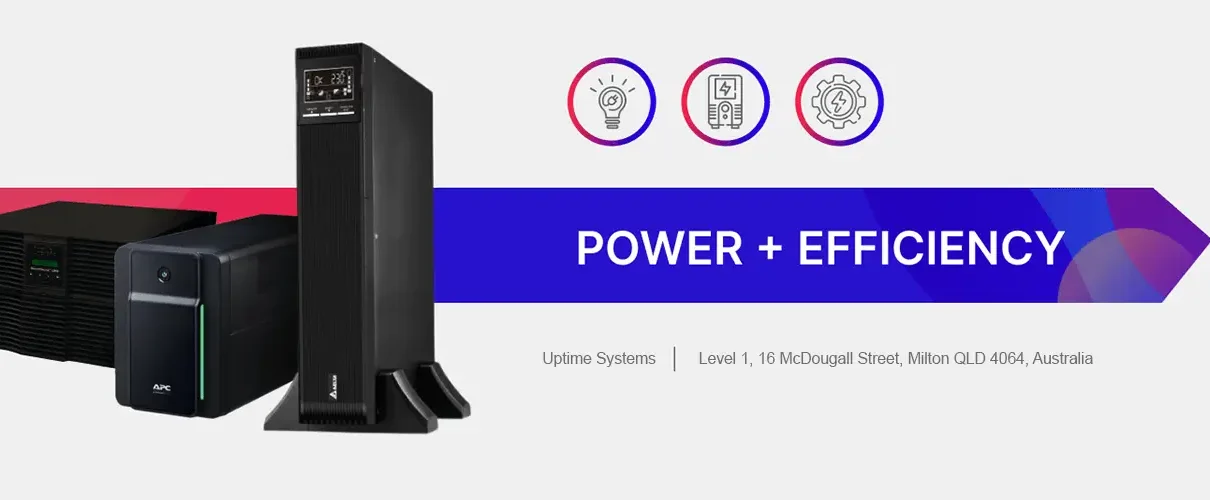Whether you are safeguarding a home office system or protecting mission-critical data in a commercial application, an Uninterruptible Power Supply is an essential part of any plan for power protection. With such a broad array of choices, it can be challenging to select the right UPS.
In this article, let’s see how to choose the best UPS based on your needs.
What is an Uninterruptible Power Supply?
An Uninterruptible Power Supply is an electrical device that supplies backup power when your primary source fails or the voltage drops below a safe level. It essentially provides a buffer between your devices and the blackout, allowing you to save your work and safely shutdown the equipment. The larger the system, the more they allow the user to continue operation for the duration of the blackout.
Why Do You Want a UPS?
Power outages can lead to hardware damage, data loss, and downtime. A UPS is even better at stopping these occurrences while also protecting you from power surges, high voltages, etc. This is even more important in flood areas or if you are using sensitive electronic equipment.
1. Assess Your Power Needs
Determine the total wattage of the devices that you plan to connect. This could involve computers, servers, routers, modems, or other critical electronics. Most backup systems will specify their ratings in terms of VA (Volt-Amps) and watts. As a rough rule, leave your UPS with at least 20-25% of headroom beyond your total load to prevent problems associated with overloading.
2. Types of UPS Systems
There are three types of Uninterruptible Power Supply systems:
Standby (Offline) UPS: Usually acceptable for home use or basic office use. If a power outage occurs, it will switch to battery power in real-time.
Line-Interactive UPS: This will provide better protection by correcting voltage fluctuations. It is typically appropriate for small to medium-sized business environments.
Online (Double Conversion) UPS: It provides no break in power supply and isolates your equipment from all power disturbances. This is ideal in data centres or other high-end applications needing completely uninterrupted, clean power.
3. Duration of Battery Life
Battery life is how long your devices can remain powered in the event of an outage. Most backup power supply devices provide approximately 5 to 30 minutes of power. The goal is not to power your devices indefinitely, but enough time to shut them down safely or switch your equipment to another source of power.
4. Outlets: Number and Type
Make sure your UPS has enough outlets for all of your critical equipment. It would be best to have a mix of battery backup and surge-only outlets. Other models include protection for data lines, such as your phone line, coaxial cables for the internet, and Ethernet connections.
5. Form Factor and Size
It comes in two basic styles: tower and rackmount. For home or personal offices, tower models are typically sized appropriately and sufficiently compact. If your business setting includes server rooms, rackmount models can be included in an existing rack of server equipment.
6. Monitoring and Management Functions
Certain contemporary uninterruptible power supply systems are integrated with LCD screens, exterior software that allows for the observation of real-time metrics, and are sometimes even able to connect to your network for remote observation and management. In the business environment these can be invaluable when it comes to timely alerts and proper shutdown.
7. Maintenance and Battery Replacement
All backup devices will also require battery monitoring/maintenance at some point in time. Make sure to determine how easy it is to replace the battery, and whether or not the manufacturer has replacements. Some high-end models feature hot-swappable, replaceable batteries, meaning you’ll be able to change a battery while powered on.
Choosing UPS in Australia
When selecting an Uninterruptible Power Supply Australia, considerations should be made regarding both the voltage standard (typically, 230V), environmental conditions in the public space and local environmental support.
Final Thoughts
Power outages aren’t rare events; they’re a constant risk that all businesses must address. Investing in a good Uninterruptible Power Supply in Australia is one of the most economical methods of ensuring uptime, safeguarding data, and keeping your customers productive.
Whether you are a start-up operating from a co-working space or a large organization with mission-critical systems, UPS systems provide the resilience needed for today’s operations.



